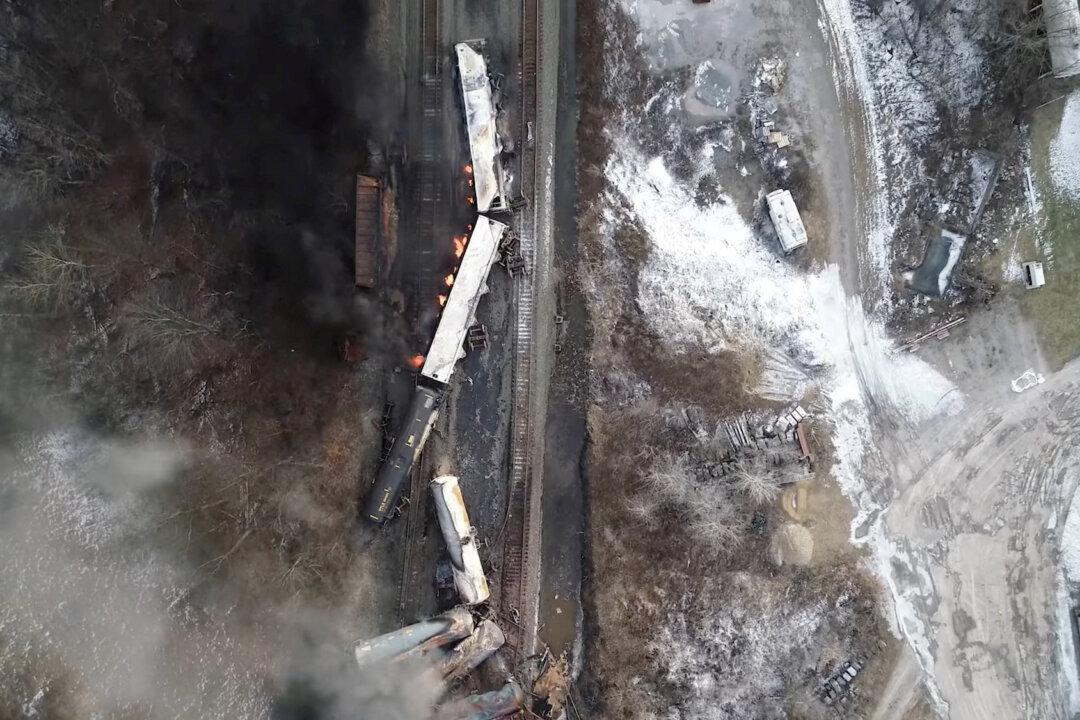Ohio officials have urged some locals living near the train derailment site in East Palestine to only use bottled water amid concerns over the potential health impacts of hazardous chemicals that spilled into the Ohio River and as others were drained from the train cars and burned off.
Ohio Gov. Mike DeWine told a press conference Tuesday that the pollution did not pose a serious threat to the five million or so people who rely on the Ohio River for their drinking water.





